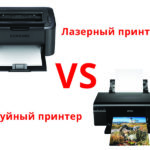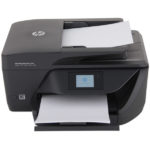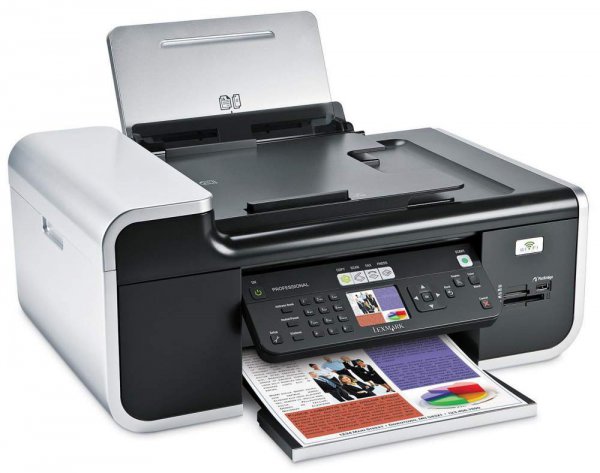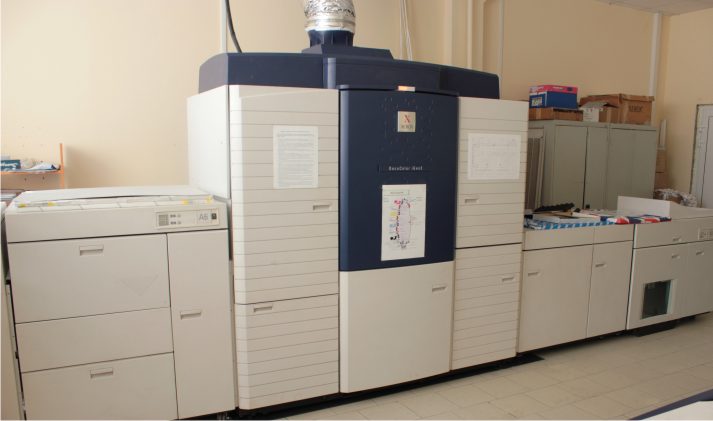Working principle of an inkjet printer
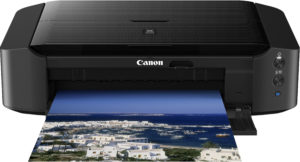 An inkjet printing device, although inferior in quality to a laser one, is still quite easy to maintain and is great for printing images and text at home. In the article you will learn about the operating features of an inkjet printer, which will allow you to compare it with other types.
An inkjet printing device, although inferior in quality to a laser one, is still quite easy to maintain and is great for printing images and text at home. In the article you will learn about the operating features of an inkjet printer, which will allow you to compare it with other types.
The content of the article
Features of inkjet printing
Let's look at the features of inkjet printing:
- Inkjet printers operate quietly during printing, making only a slight hum. The noise level of this device is 40 decibels, which is much quieter than other types of printers.
- The quality and speed of inkjet printing are interconnected. The higher the quality is set in the options, the lower the speed, and vice versa.
- In order to get a high-quality image when printing on an inkjet printer, you need to use paper that has good density. An excellent option for high-quality printing would be a sheet of paper whose density is 60–135 g/m2.
- Equipment of this type is not intended for the “Print copies” operation. To do this, you need to perform the “print” operation of the same text several times.
- If you do not use an inkjet printer for a long time, the ink will dry out. In this case, only changing the cartridge will help.
IMPORTANT! To keep ink longer, when replacing an ink cartridge, you should also change the printer head, and also use a separate replacement container.
Inkjet printer device
The main component of an inkjet printer is the print head, which receives the ink. This part is mounted on a carriage, which moves back and forth across a sheet of paper, after which the coloring matter falls on the paper itself.
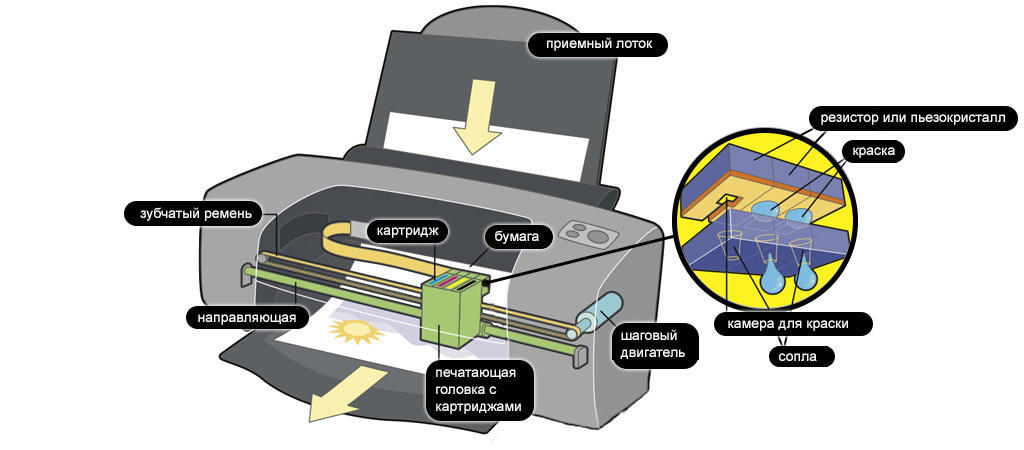
ATTENTION! The dye cannot flow out because the nozzles have too small holes.
The operation of this equipment is as follows: after a printing job, a sheet of paper enters the printing compartment, in which it moves using a advancing mechanism and is pressed against it by special rollers.
Working principle of an inkjet printer
The principle of operation of an inkjet printer is that the ink is applied to sheets of paper in droplet form through special nozzles. The size of each droplet is very small and they arrive by extrusion.
Depending on the manufacturer, this equipment can print using several technologies:
- Drop-on-demand. A specially built-in mechanism in tandem with a heating element sprays ink on demand so quickly that print quality and speed are significantly improved. During color printing, more contrast and clear image details are obtained. This method is great for printing graphs and diagrams - they have clear lines.
- Thermal method. Each nozzle has a built-in element that has the property of heating to a very high temperature when an electric current passes through it.This action promotes the formation of gas bubbles, which displace the ink onto the paper in the required quantity. After turning off the current, the heating element cools down and produces a new portion of ink. The service life of printers operating using this method exceeds the service life of other devices operating using other methods. The disadvantage of this method is that during continuous filling, the image looks blurry.
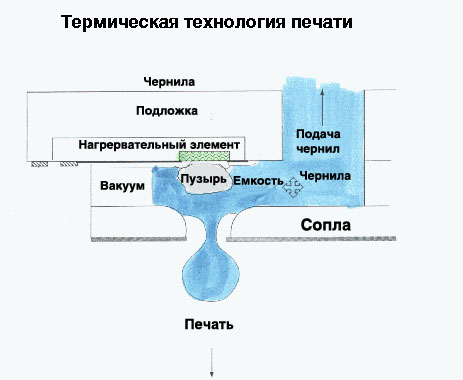
- Piezoelectric method. This method consists in the fact that each nozzle has its own flat-shaped piezoelectric crystal, which is connected directly to the diaphragm. When interacting with an electric field, it is deformed, that is, it first contracts and then expands, filling the system with ink. Thus, dots remain on the paper, which make up the entire image.
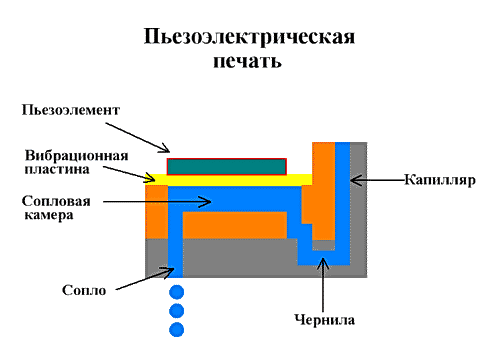
Continuous feed differs from demand feed in that the delivery of dye depends on the modulator.
Advantages and disadvantages of inkjet printing device
Inkjet printing devices, like any other type of printer, have their advantages and disadvantages.
Flaws:
- Print speed. Compared to a laser printer, the printing speed of an inkjet printing device is much slower, although this does not prevent it from being used at home. For those users who need fast printing, this equipment is not suitable.
- Possibility of ink drying out. Due to a long pause in operation, the paint may dry out, which will ultimately lead to replacing the cartridge.
- High cost of consumables for certain models. The price of ink and cartridges for some models, as well as the cost of servicing the device at service centers, is very high.
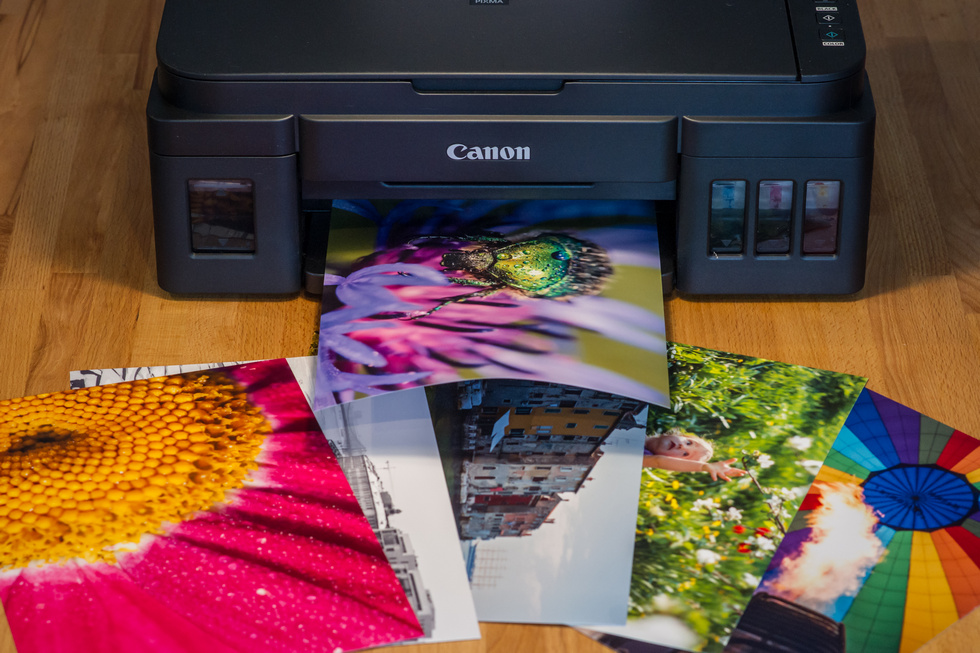
Advantages:
- low cost of the device itself;
- the ability to independently print high-quality color photographs;
- ease of refilling the cartridge at home;
- connection for continuous supply of dyes.
These are the features, pros and cons of inkjet printing devices.

